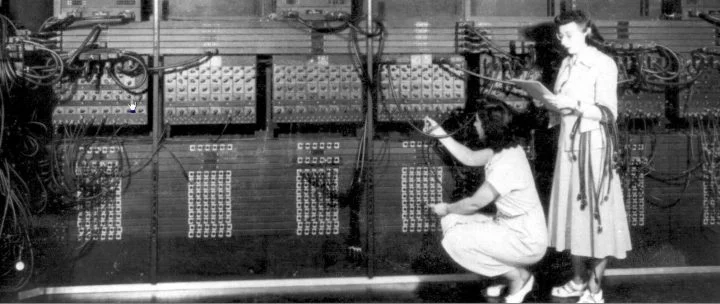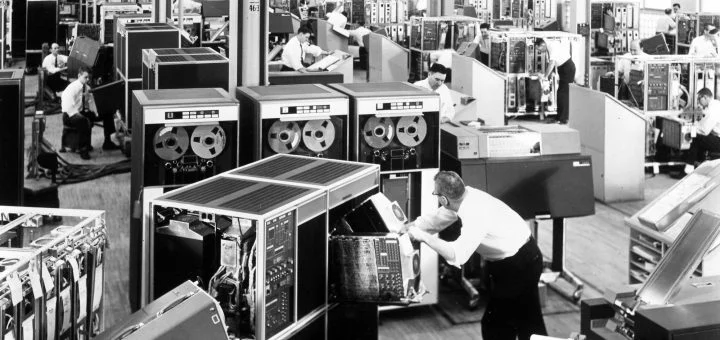The operating system provides various kinds of facilities and functions needed by applications to run, starting from providing memory, storage, input and output devices and so on.
Simply put, the operating system is like a stage and the artist is an application, where an artist does not need to prepare all kinds of needs to do a performance or stage because it has been provided by the committee in the form of a stage.
Then what happens if at the beginning of the invention the computer did not use the operating system?
Before there was no operating system
In early generation computers around 1950 the shape of the computer was not like it is now so small, at that time the type of computer used was a mainframe or large computer. in this day and age.
To interact with the computer, they have not used a keyboard and monitor as they are today, but use various kinds of light and sound buttons as indicators to show the results of the computer’s work.
Mainframe computers at that time did not use an operating system at all, so when they wanted to use the computer, the user/operator had to enter an application that was stored in magnetic storage media or perforated paper to be loaded when the computer boots.
The computer only runs one application and will work according to the program it entered until the application hangs or finishes its work and if you want to use another application, the user or operator must restart the computer and insert magnetic tape or other perforated paper to load the applications on the storage media. when the computer boots.
Operating System Found
The assembler and compiler programming languages are made for programmers whose function is to translate programming languages into machine language which was previously done manually, so that applications created by programmers can be run on computers.
When the module of computer equipment becomes more complex, gradually various functions are entered into applications that are tasked with handling input and output hardware resources, but the computer is still running single tasking, this small step is the beginning of the modern concept of computers that we use today.
When the development of computer hardware is increasingly advanced and fast, hardware vendors are required to include a runtime library that regulates and monitors the use of computer resources when used by applications, not only monitoring the CPU but also for other devices such as printers, storage card readers and signaling. This is made to minimize resource abuse and errors when the application is run.
This collection of libraries that manage various kinds of computer resources for use by applications is what is the forerunner or core of the operating system, better known as the Kernel.
What is the kernel and operating system?
Kernel is the core of the operating system itself where the Kernel functions as a communication bridge between applications and hardware, not only that the kernel also regulates the use of hardware resources by applications because if the hardware is directly accessed by the application without being regulated by the Kernel, it can cause a system crash when the hardware is accessed. by other applications.
The kernel also provides security features such as user privilege settings on Linux which makes Linux survive virus attacks even without antivirus
actually the operating system does not do any work before an application is running and when the application runs, the operating system starts allocating computer resources for use by the application.
Simply put, the operating system will stand still and wait until an application is running and then allocate computer resources for that application.
What happens in general is when people mention the operating system, then in their minds it is a combination of the kernel itself which is the real operating system, desktop environment and various tools that are guided by the operating system vendor.
Computer and operating system development
The operating system is developed and adapted to the development of computer hardware, along with the development of types of computers and operating systems from time to time
Mainframe Computer
Mainframe or large computers are the first generation of computers that were created and used by agencies for research purposes or to complete work, computers at that time still used motors, vacuum tubes, magnetic tape, perforated paper to store data. So do not be surprised if the size of the computer At that time it was very large because there had not been found a transistor/semiconductor as a substitute for a vacuum tube.
When an operating system is found, every time there is a new hardware version, the operating system is also new even though it is purchased from the same vendor, so the commands, procedures and ways of working are also different and require manual settings to change/update the operating system on the old computer.
IBM started a new breakthrough in computer hardware and operating systems in the 1960s by creating a new generation of hardware and operating system “System/360” which allowed it to be compatible with previous versions of hardware.
This innovation from IBM has become the basic concept of hardware and OS development to date. System/360 also provides a version for use on mini computers
Mini computers (mid range computers)
Mini computer is a computer with faster capabilities than its predecessor / mainframe computer and has a smaller physical form. This type of computer is used and functioned as a server for business agencies or as a research tool.
The Unix operating system was created and developed by AT & T Bell Laboratories in the 1960s and is used as the lifeblood of most of the mini computers in the world.
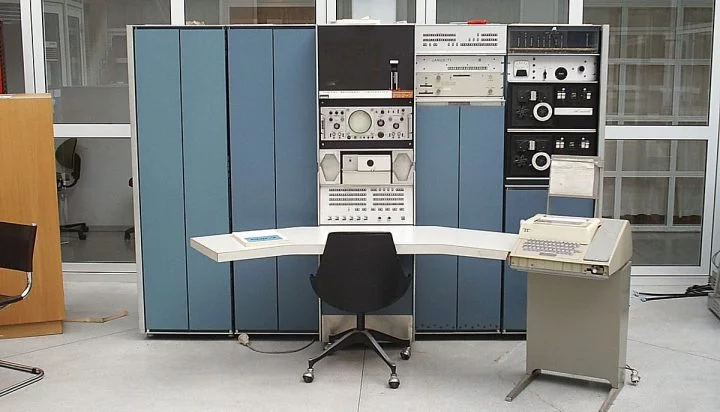
The Unix operating system is written using the C language, the specialty of the C language is that it is able to “port” where the program generated from the compilation can be run on other computers that have an environment (cpu, OS, library, etc.) that is different from the environment when the application was created.
If the C language can be ported, then Unix can also be ported to computers with different architectures. This convenience is the choice of developing second generation mini computers and the first generation of worstation.
The flexibility of the C language is what inspired the development of the operating system so that it can run on all hardware platforms with different specifications, this concept is the forerunner to the birth of free and open source software including GNU, Linux and Berkeley Software Distribution (BSD). Apple’s macOS as well built on Unix via NeXTSTEP and FreeBSD
Micro computer
A micro computer is a computer that uses a central processing unit (CPU) that functions as a micro processor, designed for personal use and has a much smaller size than a mini computer, a micro computer was developed between the 1970s and 1980s.
The computers, laptops, smartphones, tablets that we use are classified as micro computers.
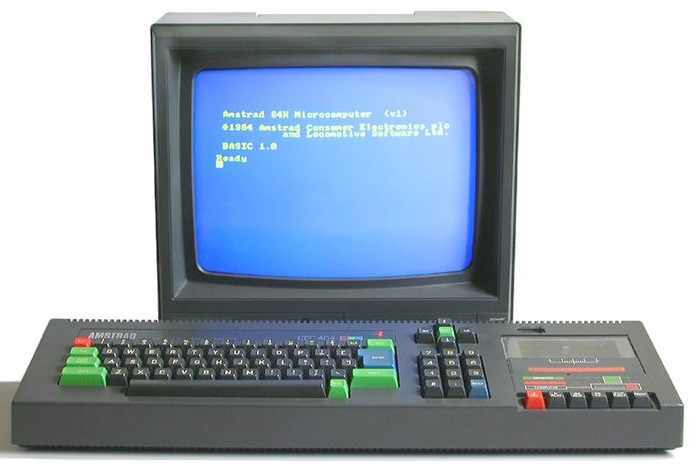
In the early 1970s, small computers began to be marketed freely in the market with the target of being used by individuals (personal computers), at that time computers were equipped with micro processors and a built in BASIC interpreter which was inserted into ROM, this BASIC also functioned as a command line interface. interface that allows the user to enter the operating system from another disk such as a floppy disk to be installed on the computer.
At that time diskettes were still very expensive and only a small number of people could afford them, so the standard storage media used were magnetic tape or cassette.
Basic is a programming language created for people with an interest in computers to create their own applications.
Gradually hard disks are used as storage media to replace cassettes and floppy disks are getting cheaper and are used for portable external storage media and as a means of moving files from one computer to another, and you are now using SSDs that are small in size but can accommodate gigabytes of data. .
HISTORY OF OPERATING SYSTEM DEVELOPMENT
Many of you may be wondering, what exactly is an operating system? And what role does my electronic device play? The operating system is the most important program that runs on a computer. Every computer in general must have an operating system to run other programs.
The first actual digital computer was designed by the English mathematician Charles Babbage (1792–1871). Although Babbage spent much of his life and fortune trying to build his ‘analytical engine’, he never managed to work properly because it was purely mechanical, and the technology of his day could not produce the wheels, gears, and wheels necessary for the high precision required. he needs. Needless to say, the analytics engine does not have an operating system.
As an interesting history aside, Babbage realized he would need software for his analytical engine, so he hired a young woman named Ada Lovelace, who was the daughter of the famous English poet Lord Byron, as the world’s first programmer. Ada’s programming language is named after him.
The operating system performs basic tasks, such as recognizing input from the keyboard, sending output to a screen, keeping track of files and directories on disk , and controlling peripheral devices such as disk drives and printers . An operating system can relate to the knowledge given to the computer brain in order to understand what functions are required to perform a job.
Operating systems can be found on a countless number of items including cell phones, ATM machines, and even many cars today use them. Still most people are familiar with the OS offerings from Microsoft (Windows), Apple (OS X ), and to a lesser extent, Linux/GNU (Ubuntu, Fedora, etc).
Let’s see how the history of the development of operating systems moves and continues to develop to this day.
FIRST GENERATION OPERATING SYSTEMS (1940S TO EARLY 1950S)
When electronic computers where first introduced in the 1940’s they were created without an operating system. All programming is done in absolute machine language, often with cables to plugboards to control basic machine functions. During this generation computers are generally used to solve simple mathematical calculations, operating systems are not always needed.
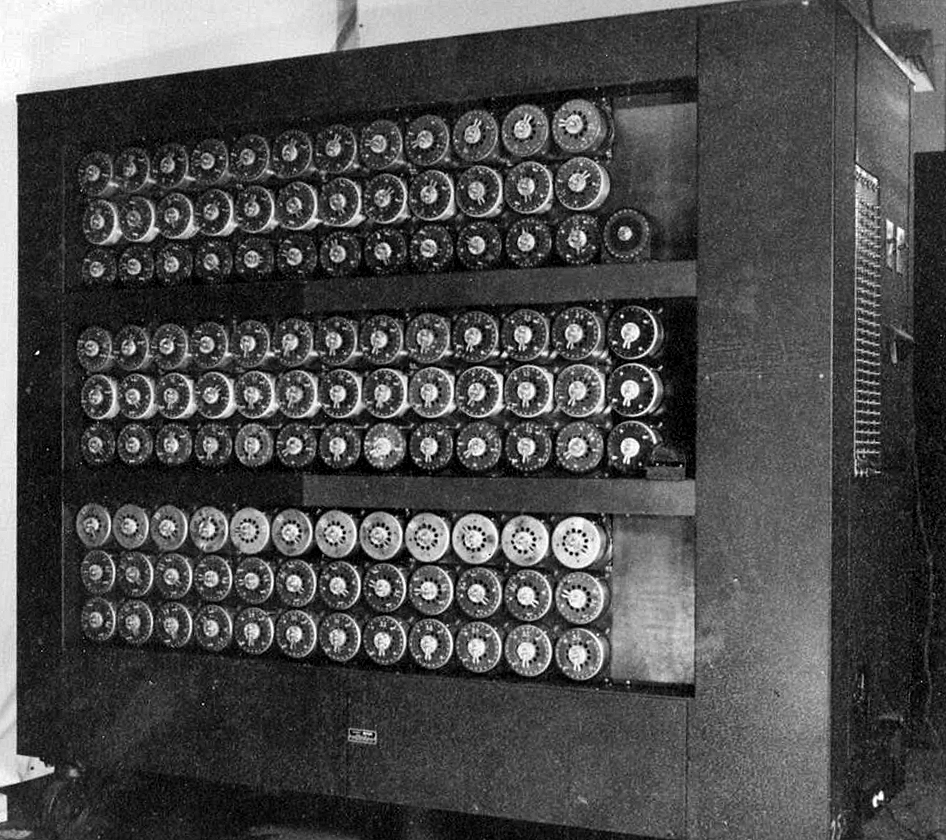
SECOND GENERATION OPERATING SYSTEM (1955-1965)
The first operating system was introduced in the early 1950s, it was called AGM and was created by General Motors for the IBM 701 machine. The operating system in the 1950s was called a single stream batch processing system because the data was submitted in groups.
These new machines were called mainframes, and they were used by professional operators in large computer rooms. Since there is such a high price on this machine, only government agencies or large corporations can afford it.
THIRD GENERATION OPERATING SYSTEMS (1965-1980)
In the 1960s operating system designers were able to develop multiprogramming systems in which computer programs would be able to do multiple jobs at introduction time. The same is that multiprogramming is a major part of operating system development as it allows a CPU to be busy almost 100 percent of the time it is operating.
Another major development during the third generation was the phenomenal growth of minicomputers, starting with the December PDP-1 in 1961. The PDP-1 was only 4K 18-bit words, but at $120,000 per machine (less than 5 percent of the price of the 7094), it sold as fried peanut. These microcomputers helped create new industries and the development of more PDPs. This PDP helped lead the creation of personal computers made in the fourth generation.
FOURTH GENERATION OPERATING SYSTEMS (1980-TODAY)
The fourth generation of operating systems saw the creation of personal computing. Although these computers were very similar to the minicomputers developed in the third generation, personal computers cost very little from the production of minicomputers.
A personal computer is so affordable that it is possible for an individual to be able to own one for personal use while a minicomputer where still at such a high price that only companies can afford to own them.
One of the main factors in the history of the development of personal or personal computing operating systems is the birth of Microsoft and the Windows operating system. The Windows Operating System was created in 1975 when Paul Allen and Bill Gates had a vision to take personal computers to the next level.
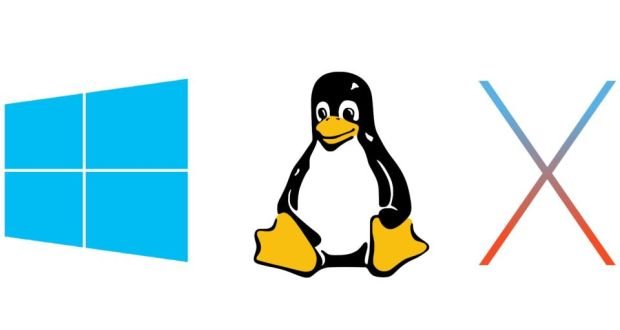
They introduced MS-DOS in 1981 although it effectively created a lot of difficulties for people trying to understand its cryptic commands. Windows then became the largest operating system used in technology today with the release of Windows 95, Windows 98, WIndows XP (which is currently the most widely used operating system to date), and their latest Windows 10 operating system.
Along with Microsoft, the other major Apple operating systems were created in the 1980s. Steve Jobs, co-founder of Apple, created the Apple Macintosh which was a huge success due to the fact that it was so user friendly. Windows builds throughout the years were then influenced by the Macintosh and created strong competition between the two companies. Today all electronic devices use technology from operating systems, from our computers and smartphones, to ATM machines and motor vehicles. And as technology advances, so do operating systems.
In 1991 Linus Torvalds a student majoring in Computer science from the University of Helsinki (University of Helsinki) wrote an independent operating system to be able to run on his new PC that uses an 80386 processor. The process of making this operating system kernel (which will later be named the Linux kernel) was completed using MINIX and compiled using the GNU C compiler.
The kernel created by Linus is then published for the wider community (opensource) and everyone can use and develop it “free”.
On August 25, 1991, at the age of 21, he published his first Linux kernel via ” Usenet ” (a kind of internet at that time) in a newsgroup forum “comp.os.minix.”
Linux Writes Notes For Its Published Kernel
Hello everybody out there using minix –
I’m doing a (free) operating system (just a hobby, won’t be big and professional like gnu) for 386(486) AT clones. This has been brewing since april, and is starting to get ready. I’d like any feedback on things people like/dislike in minix, as my OS resembles it somewhat (same physical layout of the file-system (due to practical reasons) among other things).
I’ve currently ported bash(1.08) and gcc(1.40), and things seem to work. This implies that I’ll get something practical within a few months, and I’d like to know what features most people would want. Any suggestions are welcome, but I won’t promise I’ll implement them
Linus ( torvalds@kruuna.helsinki.fi )
PS. Yes – it’s free of any minix code, and it has a multi-threaded fs. It is NOT portable (uses 386 task switching etc), and it probably never will support anything other than AT-harddisks, as that’s all I have :-(.
— Linus Torvalds
With the help of the linux kernel community the first version was published
This kernel will later become the Linux kernel that we use today as a result of the development of the open source community from time to time.

